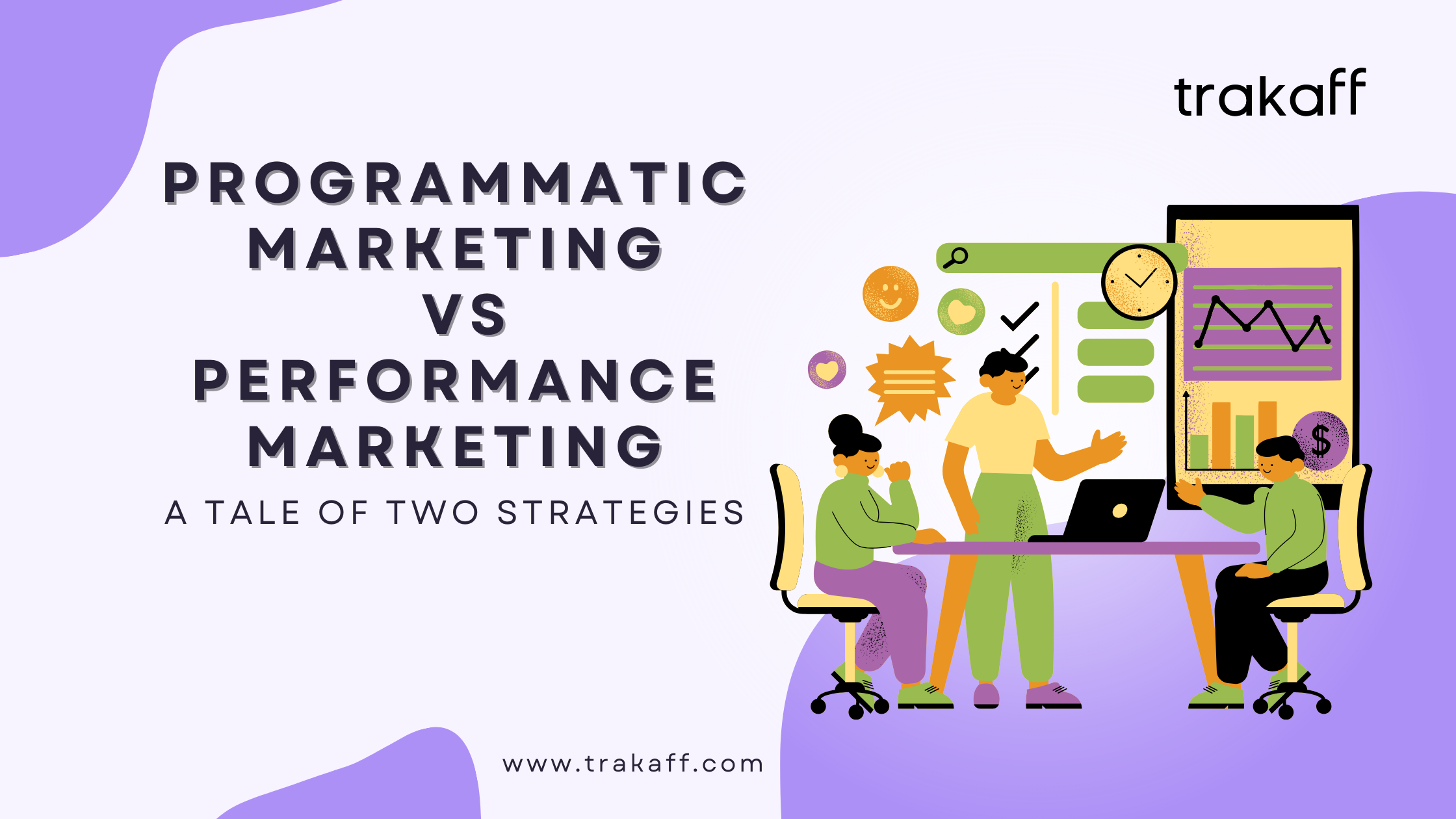Programmatic Marketing vs Performance Marketing: A Tale of Two Strategies
In the fast-paced world of digital marketing, two powerful strategies have emerged as game-changers for businesses looking to reach their target audiences effectively: programmatic marketing and performance marketing. While both share the ultimate goal of maximizing ROI, they approach it from different angles. In this captivating journey through the realms of digital advertising, we’ll explore the intricacies of programmatic marketing vs. performance marketing, arming you with the knowledge to make informed decisions for your next campaign.
The Programmatic Revolution
Imagine a world where ad buying is streamlined and your message reaches the right people at the right time—that’s the power of programmatic marketing. This innovative, data-driven approach harnesses the strength of automated software to make digital ad buying smarter and more efficient. Dive into the world of programmatic marketing and discover how it can transform your advertising game:
- Precision Targeting: Pinpoint Your Perfect Audience
- Real-Time Optimization: Stay Ahead of the Digital Curve
- Maximize ROI: Get More Bang for Your Marketing Buck
The Performance Marketing Phenomenon

Performance marketing is a results-driven force that puts the power of measurable outcomes in your hands. This strategy rewards marketers based on the success of their campaigns, ensuring that every dollar spent contributes to your bottom line. Discover the secrets behind the performance marketing phenomenon:
- Measurable Success: Track Your Progress Like a Hawk
- Data-Driven Insights: Unlock the Power of Knowledge
- Pay for Performance: Invest in Results, Not Promises
A Closer Look: The Yin and Yang of Digital Advertising
While programmatic and performance marketing may seem like two sides of the same coin, they possess distinct characteristics that set them apart. Programmatic marketing automates the ad-buying process, allowing you to reach your target audience with laser-like precision. Performance marketing, on the other hand, focuses on driving specific actions and conversions, ensuring that your marketing efforts translate into tangible results.
Similarities and Differences: A Side-by-Side Comparison
Similarities:
Data-Driven Decisions: Both strategies rely on data to inform campaign optimizations and drive results.
ROI Optimization: Maximizing return on investment is a core objective for both programmatic and performance marketing.
Continuous Improvement: Ongoing analysis and adjustments based on performance metrics are crucial for both approaches.
Differences:
Ad Buying Automation: Programmatic marketing automates the ad buying process, while performance marketing typically involves manual optimization.
Targeting Focus: Programmatic marketing prioritizes reaching the right audience, while performance marketing emphasizes driving specific actions.
Compensation Model: Programmatic marketing often uses a cost-per-impression or cost-per-click model, while performance marketing frequently employs a pay-for-performance structure.
Success Stories: Real-World Examples of Programmatic and Performance Marketing in Action
To gain a deeper understanding of these strategies, let’s explore some real-world examples of businesses that have successfully leveraged programmatic and performance marketing:
1. Programmatic Marketing Case Study: A Major Retailer
A leading retailer wanted to increase brand awareness during the holiday season. By implementing a programmatic marketing campaign, they were able to reach a wider audience more efficiently. Using advanced targeting techniques and real-time optimization, the retailer saw a significant increase in website traffic and brand recall, resulting in a successful holiday campaign.
2. Performance Marketing Case Study: A Tech Startup
A tech startup aimed to generate qualified leads for their new product launch. They opted for a performance marketing approach, focusing on pay-per-click (PPC) ads and social media promotions. By continuously monitoring and optimizing their campaigns based on conversion data, the startup was able to achieve a remarkable 30% increase in leads within the first month of the campaign.
Which strategy is right for you?
When selecting between programmatic and performance marketing, consider your campaign goals, target audience, and available resources. Programmatic marketing excels at reaching a wide range of potential customers efficiently, making it ideal for brand awareness campaigns. On the other hand, performance marketing is well-suited for driving specific actions, such as sales or lead generation, as it focuses on rewarding marketers based on achieved results.
Conclusion
In the ever-evolving landscape of digital marketing, both programmatic and performance marketing offer unique advantages. By understanding the key differences and similarities between these strategies, you can make an informed decision that aligns with your business objectives. Whether you choose programmatic marketing for its advanced targeting capabilities or performance marketing for its results-driven approach, embracing a data-driven mindset is crucial for success.
